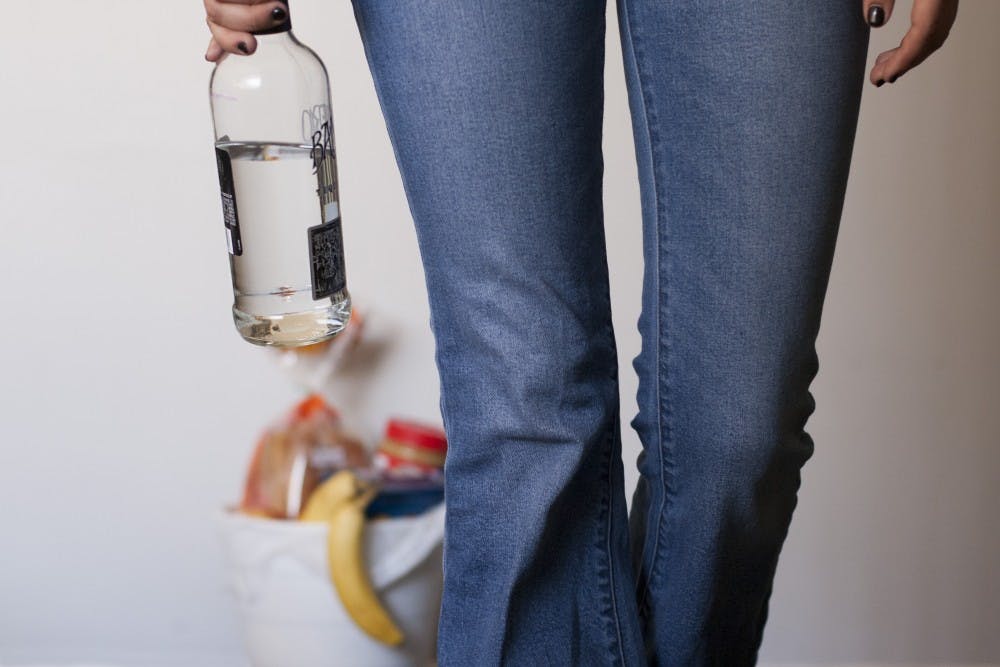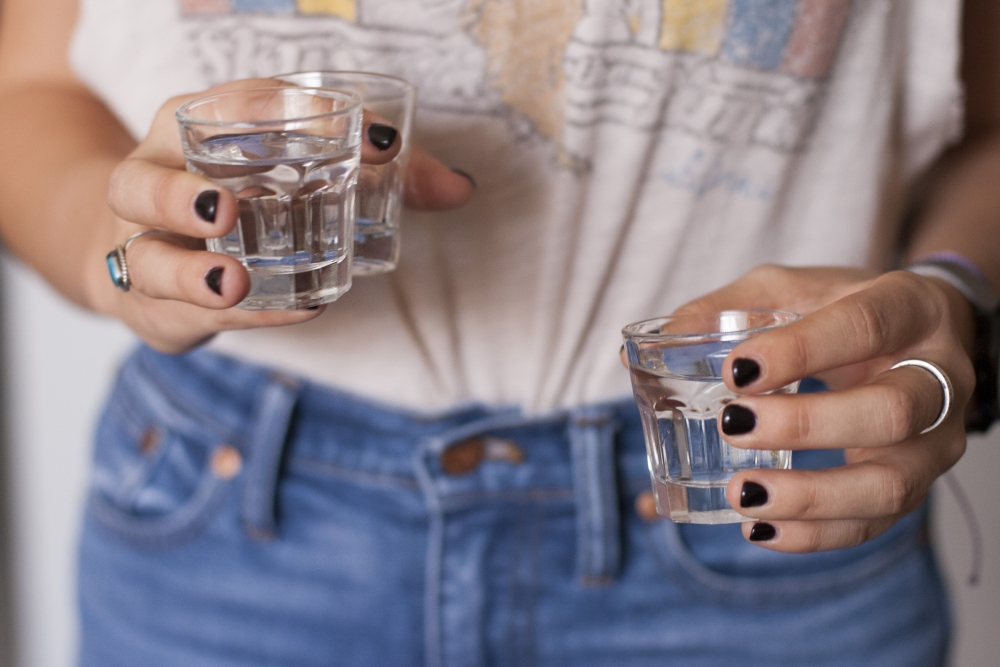Ten college students walk into a bar and new research shows that if they’re all heavy-drinkers, at least eight of them have participated in “drunkorexic” behavior.
“Drunkorexia” — a hybrid of the words “drunk” and “anorexia” — is the term given to behaviors, such as skipping a meal, exercising heavily, inducing vomiting and using laxatives, used to either decrease the net calorie intake when consuming alcohol or get drunk faster.
A University of Houston survey of 1,184 heavy-drinking college students – defined as those who binge-drink at least once a month – found that 80 percent had participated in some form of “drunkorexic” behavior in the past three months.
The author of the report, University of Houston psychology professor Dipali Rinker, says "drunkorexia" is more often found on college campuses where peer pressure, being tight on cash and body image make it more prevalent.
“I was interested in (the) coexisting risk that might enhance or augment the problems in risky behaviors among college students,” Rinker says, adding students found the behaviors to be "extremely normative."
The college environment
The college environment allows dangerous behaviors to flourish for a number of reasons, but the main issue, Rinker says, is the misconception that binge-drinking is the norm among emerging adults.
Dispelling the normative perception is the most effective way researchers have found to deter this type of behavior, she says.
Chrissy Barth, a lecturer in the College of Health Sciences at ASU, says "drunkorexic" behavior can stem from a student's first taste of freedom.
“When college students leave home, that’s a big transition,” she says. “In some ways, college is our first experience with alcohol and they can’t gauge how much is too much.”
Barth, who runs a nutrition consulting practice, says she has seen several clients use alcohol to control their weight. Though her patients are all different ages, a majority of those in their twenties practice behaviors that align with “drunkorexia,” she says. Barth says the issue is more prevalent in college students because there is a pressure to look and act a certain way.
Men v. Women
While eating disorders are typically attributed to women, the study found “drunkorexic” behavior was equally as common in men.
“We really thought that women would dominate as far as engaging in these behaviors,” Rinker says.
Megan Kniskern, an ASU College of Nutrition lecturer and certified eating disorder dietitian, says college students may partake in these behaviors in order to keep up their appearance.
“Obviously, appearance is really key in the college environment,” she says. “For both males and females, it is becoming more and more prevalent.”
There is an obsession with appearance more so than there ever has been in the past for both genders, she says.
Kniskern says she saw dieting become socially acceptable for men when the Atkins diet became popular.
“Socially, when men started dieting, it snowballed into this mentality of staying in shape,” she says, adding the fitness trend has become an obsession that is “image driven more than fitness driven.”
“If they’re doing all these great things for their diet during the day, they don’t want to counteract what they’re doing when they go out at night,” Kniskern says.
But neither gender is immune to the damage that “drunkorexia” can have on the body.
Health effects of “drunkorexia”
“We found that people that engage in these behaviors not only drink more heavily but they also experience more health problems than people who don’t,” Rinker says.
Alcohol is very high in empty calories. When you don’t eat and replace those calories you would’ve had from food with alcohol, you’re not getting any nutrients, she says.
“One night of heavy binge drinking can do damage to the liver,” Kniskern says. “But the liver is remarkable because it can heal itself.”
But it’s the compounding factor of “drunkorexia” that will lead to problems in the long run, she says.
“Often times if someone skips a meal to binge-drink, they will partake in the other socially-acceptable convention of late-night binge-eating," she says.
Eating greasy food after a night of heavy-drinking and before you go to bed is just continuing this “cycle of inappropriate relationships with the alcohol and the food,” Kniskern says.
Building a bad relationship
Drinks are also expensive and many college students are on a budget, she says. Many students will choose to have a drink rather than get something to eat to save money.
But by treating alcohol that way, going out becomes “more about the ritual of the behavior than enjoying the beverage you’re consuming,” she says.
That kind of mentality isn’t socially acceptable later in life.
“Some find that without the college environment they don’t use alcohol the same way and are more motivated by their career,” Kniskern says.
But there are others that leave college not knowing how to consume alcohol in a responsible way and they suffer for it, she says. “It can get really scary the more you think about this behavior.”
Dealing with “Drunkorexia” (sidebar)
“The first thing is to understand that alcohol cannot be a substitute for food, and with that thinking, the way your choosing to manage your weight is problematic,” Rinker says.
Binge-drinking is not as common as it seems and dispelling the normative perception is the most effective way that researchers have found to deter this type of behavior, she says.
“Spread it out,” Kniskern says. “One drink per hour is a more moderate way to budget your consumption.”
“Create situations that work with your budget and still work with control,” Kniskern says.
If you go out to eat before, don’t get a drink with your dinner or get a side instead of a whole entrée if that’s cheaper, she says.
“Look for the overall pattern,” Barth says.
Drinking socially can be healthy but it becomes a problem when someone starts to use alcohol as a way to control their weight, she says.
“You can also reach out for help at ASU, they have services,” Barth says.





